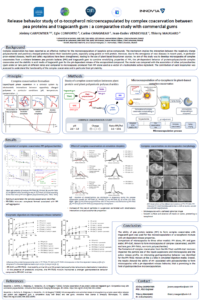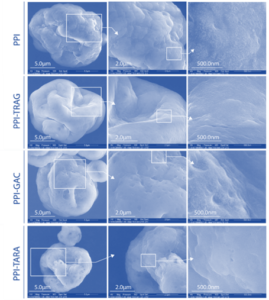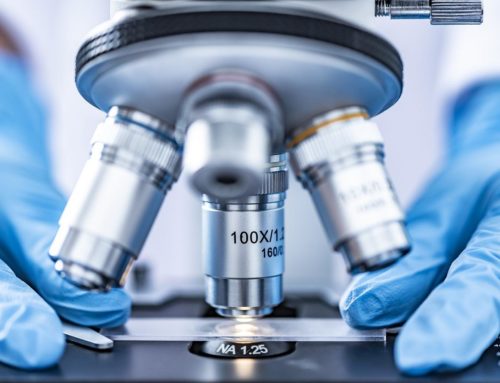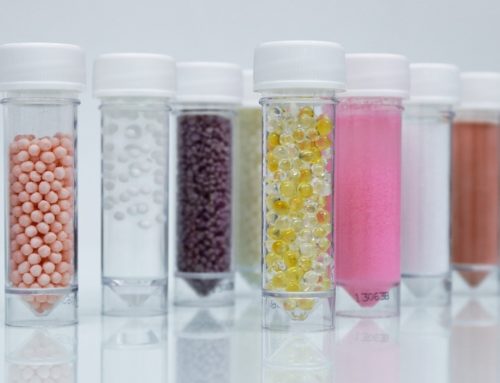
Study on complex coacervation phenomena using biopolymers of plant origin, and development of formulations enabling the encapsulation of liposoluble actives with the aim of protection and controlled pH-dependent release in complex systems.
 Microencapsulation encompasses all the techniques used to isolate a bioactive compound from its environment. The advantage of this technology lies in its ability to ensure protection, compatibility, and stabilization of the active ingredient, preserve its functionality, and control its release profile.
Microencapsulation encompasses all the techniques used to isolate a bioactive compound from its environment. The advantage of this technology lies in its ability to ensure protection, compatibility, and stabilization of the active ingredient, preserve its functionality, and control its release profile.
The choice of encapsulating matrix depends on the application and the active ingredient and must meet the requirements associated with the use of renewable, biodegradable and biocompatible materials, to avoid any risk of toxic, inflammatory or immunogenic reactions or accumulation in the organism in question. However, the interesting properties of certain synthetic polymers have no equivalent in the natural world, or these equivalents are difficult to transpose to industrial processes.
This context forces microencapsulation manufacturers to master the knowledge of the different natural molecules available on the market, and to select the raw materials to be incorporated into their formulations according to the intended application. The solutions proposed by the industry enable the protection of water- or fat-soluble active ingredients through the development of innovative technologies that produce a submicron emulsion that can be spray-dried.
However, difficulties persist in mastering the controlled release of encapsulated active ingredients, and there is growing demand for the development of systems with pH-dependent release.
 In this context, the present work proposes to study complex coacervation phenomena using biopolymers of plant origin, and to develop formulations enabling the encapsulation of liposoluble actives with the aim of protection and controlled pH-dependent release in complex systems. The encapsulation systems were formulated from four protein-polysaccharide couples of plant origin: pea proteins associated with gum tragacanth, gum arabic, sodium alginate and tara gum.
In this context, the present work proposes to study complex coacervation phenomena using biopolymers of plant origin, and to develop formulations enabling the encapsulation of liposoluble actives with the aim of protection and controlled pH-dependent release in complex systems. The encapsulation systems were formulated from four protein-polysaccharide couples of plant origin: pea proteins associated with gum tragacanth, gum arabic, sodium alginate and tara gum.
The first part focused on the influence of the nature of the polysaccharide (negatively charged or not) on the associative phase behavior of the protein-polysaccharide couple, as well as the optimal physico-chemical factors (pH, ratio) favoring the complex coacervation of the couple. Optimal parameters were thus determined for each of the couples.
The second part focused on the formulation of microspheres for the encapsulation of α-tocopherol from a matrix composed of the complex coacervates studied previously. This section begins with a study of the influence of the protein-polysaccharide pair and these factors on the quality of encapsulation of the emulsified active ingredient. Secondly, the influence of the protein-polysaccharide couple of spray-dried solutions is studied on microsphere formation, surface properties and α-tocopherol release in simulated digestion media.
The gastroprotective potential of gum tragacanth in combination with pea proteins was demonstrated as a function of the ratio used. An evolution in the release behavior of the active ingredient from the microspheres was also observed as a function of the protein/polysaccharide ratio.
This work has led to a better understanding of the mechanisms enabling the formation of complex coacervates from biopolymers of plant origin, and their ability to encapsulate and release an active substance in a controlled manner.

PART 1 : Complex coacervation of pea protein isolate and tragacanth gum: Comparative study with commercial polysaccharides
ABSTRACT
The ability of pea protein isolates (PPI) to form complex coacervates with tragacanth gum was investigated. The coacervate formation was structurally compared to three other PPI-polysaccharide interaction models: arabic gum and sodium alginate (known to form coacervates with PPI) and tara gum, a galactomannan. The effects of the pH and protein/polysaccharide ratio were mainly investigated using turbidity and zeta potential measurements. Regarding the pH of soluble complex formation, the pH of complex coacervates increased with the increase in protein-anionic polysaccharide mixture ratio. SEM images revealed the ability of the spray-drying process to form spherical particles of pea protein-polysaccharide complexes. The specificity of the microparticle surface was protein-dependent. FTIR analyses of coacervates showed the electrostatic interaction between the PPI and the polysaccharides. The results showed that tragacanth gum could be used as an alternative to gum arabic to form complex coacervates with PPI based on zeta potential measurements and coacervation yield studies.
Read the full article from INNOVATIVE FOOD SCIENCE & EMERGING TECHNOLOGIES, Vol 69 :
https://www.sciencedirect.com/science/article/abs/pii/S1466856421000424
Article about the thesis from :
Jérémy Carpentier (A&B), Egle Conforto (A), Carine Chaigneau (B), Jean-Eudes Vendeville (B), Thierry Maugard (A)
A : Université de La Rochelle, UMR CNRS 7266, LIENSs, UFR Sciences, Avenue Michel Crépeau, 17042 La Rochelle, France
B : IDCAPS, R&I subsidiary of INNOV’IA (IDCAPS became CAPSULAE in 2022), 4 rue Samuel Champlain, Z.I. Chef de Baie, 17000 La Rochelle, France
PART 2 : Microencapsulation and controlled release of α-tocopherol by complex coacervation between pea protein and tragacanth gum: A comparative study with arabic and tara gums
ABSTRACT
The ability of pea protein isolates (PPI) to form complex coacervates with tragacanth gum (TRAG) was used for the microencapsulation of α-tocopherol mixture with pH-dependent release properties.
The microcapsules were compared to three other models: PPI alone, PPI and gum arabic (PPI-GAC, known to form microcapsules of complex coacervates), and PPI and tara gum (PPI-TARA, non-ionic polysaccharides).

The behaviors of the complex coacervates and microcapsules were studied according to the protein/polysaccharide mixture and protein/polysaccharide ratio.
The formation of complex coacervates from the PPI-TRAG and PPI-GAC mixtures impacted the particle size of the liquid suspensions and microcapsules, the efficiency of encapsulation and the active release profile.
An interesting gastroprotective behavior was identified for the PPI-TRAG mixture at the 1:1 ratio in simulated digestion media.
Overall, the results showed the ability of PPI associated with polysaccharides to form microcapsules with a pH-dependent release behavior, that is promising in the field of gastroprotective microencapsulation.
Read the full article from INNOVATIVE FOOD SCIENCE & EMERGING TECHNOLOGIES, Vol 77 : https://www.sciencedirect.com/science/article/abs/pii/S1466856422000364
Article about the thesis from :
Jérémy Carpentier (A&B), Egle Conforto (A), Carine Chaigneau (B), Jean-Eudes Vendeville (B), Thierry Maugard (A)
A : Université de La Rochelle, UMR CNRS 7266, LIENSs, UFR Sciences, Avenue Michel Crépeau, 17042 La Rochelle, France
B : IDCAPS, R&I subsidiary of INNOV’IA (IDCAPS became CAPSULAE in 2022), 4 rue Samuel Champlain, Z.I. Chef de Baie, 17000 La Rochelle, France
—-
Capsulae Research and Innovation Center, subsidiary of INNOV’IA
Contact-us
"*" indicates required fields



